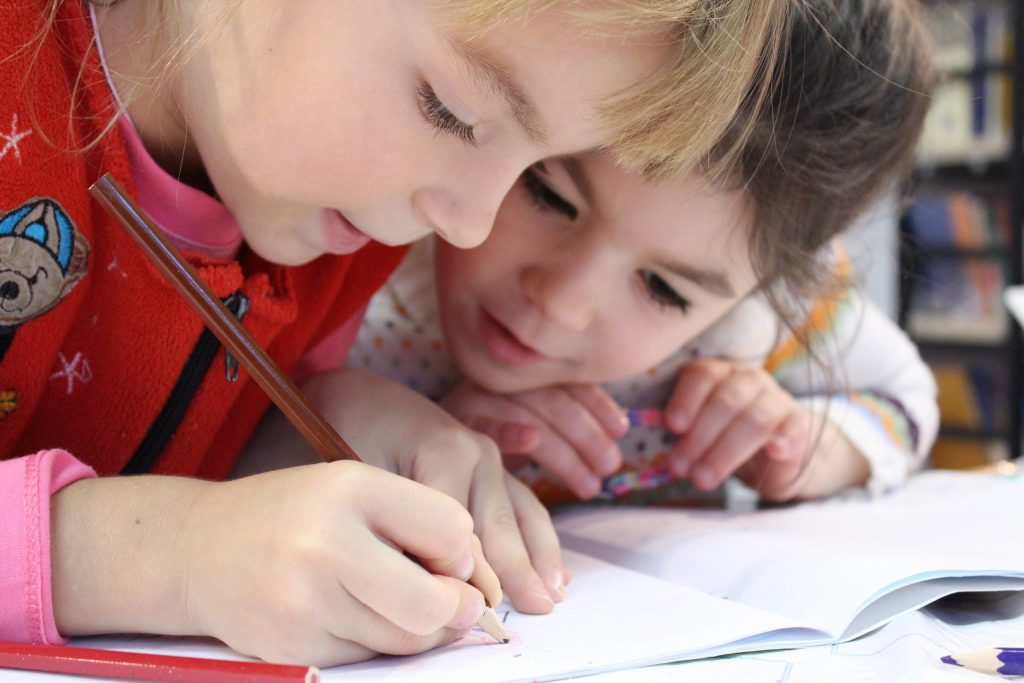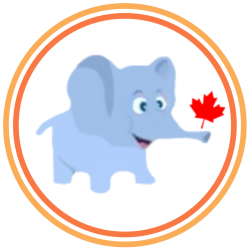About Preschool Program
Transition into the Pre-school/Junior Room
When your child has completed thirty months and is on thirty one months, he/she will move to the Junior Room. In most cases a spot is available, but there could be the possibility that if a spot is not available immediately, your child could be in the Toddler room for a few weeks after 30 months before a space becomes available in Pre-School room. The teacher in the Toddler Room will ensure that your child will receive individual programming that is age appropriate if they continue to remain in the same room. Your child will have pre- visit the Pre-School room before he/she moves to that program room and get to know the Educators as well as other children. The toddler Educator will communicate with the Pre-School Educator about your child who is moving up and will give them enough information about your child.

Preschool Program: (31 months to 5 years) – Licensed for 24 children Ratio: 1 teacher to 8 children
20% mixed age grouping ie can accept upto five children under 31 months in the room
As your child settles in the room, he/she will befree to express emotion, imagination, confidence and personality begins to shine. Staff carefully observe each child’s development and provide activities based on their interest to expand their skills in different learning areas. A lot of social development occurs and children are given opportunities to problem solve in a respectful way using their words. We provide an environment that expands the child’s all round development. At this age, children learn by doing and observing. By offering a variety of learning experiences your child will gain knowledge of basic shapes, colors, numbers and expand their knowledge about things around them. The children are exposed on a daily basis to a variety of activities based on their interests that enhance their learning. A lot of attention is paid to hand eye co-ordination, strengthening of pincer grip and small muscles. A variety of activities are provided based on their interests and that are age appropriate that strengthens muscle development. We instill in the children the grass roots of learning and encourage them to achieve independence in dressing themselves, tying their shoe lace, feeding themselves and self help in hygiene. We encourage the children to feel good about themselves and develop a positive self image. The children are free to express themselves in a positive way. They develop their cognitive skills.
Domain and Skills being observed: (reference made to the document Every Learning for Every Child Today – A framework for Ontario early childhood settings January 2007) – Preschool Kindergarten (2.5 yrs to 6 yrs)
Social: Following physical distancing: Making friends, conflict resolution and social problem-solving skills, helping skills by tidying up after themselves, interacting positively and respectfully, cooperating, showing empathy, taking another person’s point of view, interacting with adults,
Emotional: Self concept, identity formation, self-esteem, recognizing and expressing emotion, regulating attention, emotions and behaviour, positive attitude towards learning
Communication, language and literacy skills: Using verbal and non-verbal communication , using English and child’s home language, vocabulary, conversing with peer and adults, using descriptive language to explore, explain and extend, listening to others, enjoying literacy, using and understanding the power of literacy, retelling stories, phonological awareness, letter recognition, understanding of orientation and familiar conventions of print, matching spoken words with written ones, beginning to write letters of the alphabet and some high-frequency words
Cognition: Self-regulation, problem solving, representation, questioning, observing, collecting and organizing skills, reflecting and reaching conclusions, communication findings, reasoning logically, classifying, seriating, counting, determining quantity, comparing quantity, representing numbers, describing and determining ordinal number and position, understanding two dimensional and three dimensional shapes, identifying patterns, measuring length, width and capacity, temperature and time, money, completing simple number operations, using number symbols and operations, using spatial relations, directions, maps
Physical: Increasing levels of activity, endurance and variation in types of activity and skills, gross motor skills e.g.: walking, jumping, hopping, galloping, throwing, riding, movement and expression. Fine motor skills development through dressing, eating,
Items to bring with you to leave at the daycare:
- three complete change of clothes (socks, pants, shirt, undershirt – based on season)
- diaper cream (if used) with your child’s name marked and labeled (ensure no nut products in the cream)
- Pack of diapers (child used 5 to 6 diapers per day)
- Blanket in winter or light sheet in summer with child’s name on it (no pillows please). Blankets/sheet get washed here every Friday or sooner if needed
- Suitable outdoor winter clothing such as boots, hat, mittens, scarf, snow pants, jacket or snow suit
- Suitable outdoor summer wear such as comfortable closed footwear, hat, light jacket for rainy days or sweater
- sunscreen with your child’s name labeled on it. Ensure sunscreen does not have nut ingredient.
- 5 Bibs (if you prefer) with your child’s name on it.
- Photograph of your child and a photograph of your family
